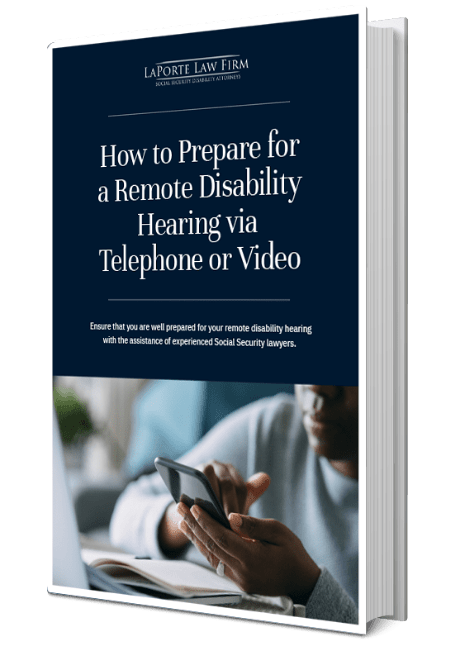
COPD, asthma and other respiratory disorders can cause significant limitations which can effectively prevent individuals from being able to sustain the requirements of full-time employment. Individuals who are seeking Disability benefits due to having severe breathing issues can be approved if their condition, symptoms and their effect in their daily life are well documented by objective medical evidence (such as breathing tests, scans, etc.)
In certain severe cases, benefits can be granted rather promptly if the individual effectively “meets” all the requirements of one of the Social Security medical listings. Social Security has recently revised their medical criteria for evaluating respiratory systems disorders as we will explain further. Alternatively, if an individual does not meet the requirement of the medical listings, but still has limitations that affect his functioning, eligibility for disability benefits can also be established by proving an inability to sustain performance of any past relevant work, or any other type of job that exists in the United States.
COPD (chronic obstructive pulmonary disease) includes several lung diseases, including emphysema, bronchitis, and sometimes asthma, which cause coughing, wheezing, and shortness of breath. People affected with COPD exhibit reduced breathing capacity due to obstructed airflow into and out of the lungs. The most common cause of COPD is smoking, and quitting smoking will usually stabilize symptoms, if not always improve them. COPD is diagnosed through spirometry, a pulmonary function test that measures the amount of air that can be inhaled and exhaled over a certain period. Asthma can be partly diagnosed by a pre-bronchodilator and post-bronchodilator spirometry test.
Often times, COPD can be accompanied by another disorder: sleep apnea. With this condition, individuals often experience daytime fatigue and reduced functioning because of their lack of restful sleep at night.
Cystic fibrosis is another respiratory disease and it can be life-threatening. It causes build-up of thick mucus in the lungs, liver, and pancreas. The symptoms of cystic fibrosis include persistent coughing, pulmonary hypertension, shortness of breath, and frequent lung infections.
Social Security’s Listings for Respiratory Disorders:
Listing 3.02 for Chronic Respiratory Disorders
COPD is evaluated under Listing 3.02 for chronic respiratory disorders. A person can meet this listing if a spirometry test has shown that the FEV1 (volume of air exhaled in one second) is equal or less than a given amount depending on the individual’s height. Table I-B in the listing states, for example, that an adult woman who is 5’5″ meets the listing with an FEV1 of 1.35 or below.
Those with chronic restrictive ventilatory disease, which is marked by decreased lung volume, can also meet this listing based on the results of a spirometry test. If the FVC (forced vital capacity), the amount of air one can exhale after taking deepest breath, is less than or equal to the amounts in Table II of the listing, the person will meet the requirements of the listing.
The third part of listing 3.02 is for persons whose lungs cannot properly oxygenate their blood. The important test results here are the DLCO (diffusing capacity of lungs for carbon monoxide), the PO2 (pressure of oxygen in arterial blood), and the PCO2 (pressure of carbon dioxide in arterial blood).
Alternatively, if a person has been hospitalized for at least two days, three times within a year, due to breathing problems (at least 30 days apart), the individual can automatically be approved for disability benefits.
Because the tables of lung function results in listing 3.02 are technical, it is important to ask for a doctor’s opinion, preferably a pulmonary specialist, to confirm whether the medical listing requirements are indeed met.
Listing 3.03 for Asthma
An petitioner can also qualify for disability due to an asthma condition when the asthma is persistent and causes attack episodes that require hospitalization at least three times in a year. This requirement changed last year when Social Security revised their medical criteria. The old medical listing used to require six hospitalizations in a 12-month period. It must be noted that the asthma attacks must occur, “despite following prescribed treatment”, at least 30 days apart and must last at least 48 hours each. (Chronic asthmatic bronchitis may be evaluated under listing 3.02 for COPD, discussed above.)
Listing 3.04 for Cystic Fibrosis
There are several ways to meet the listing 3.04 for cystic fibrosis, including needing frequent hospitalizations or having low FEV1 results or oxygen saturation levels (SpO2).
In addition to the above, the SSA’s listing also covers bronchiectasis, emphysema, pneumoconiosis, pneumonia, and other lung infections.
The LaPorte Law Firm has vast experience in handling applications and appeals for disability cases based in part on pulmonary conditions. If you have any questions, please contact us at any of our Bay Area locations or by calling 1-800-735-3425.




